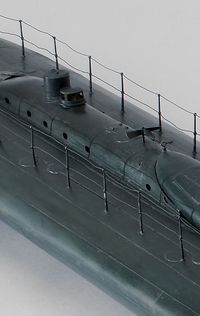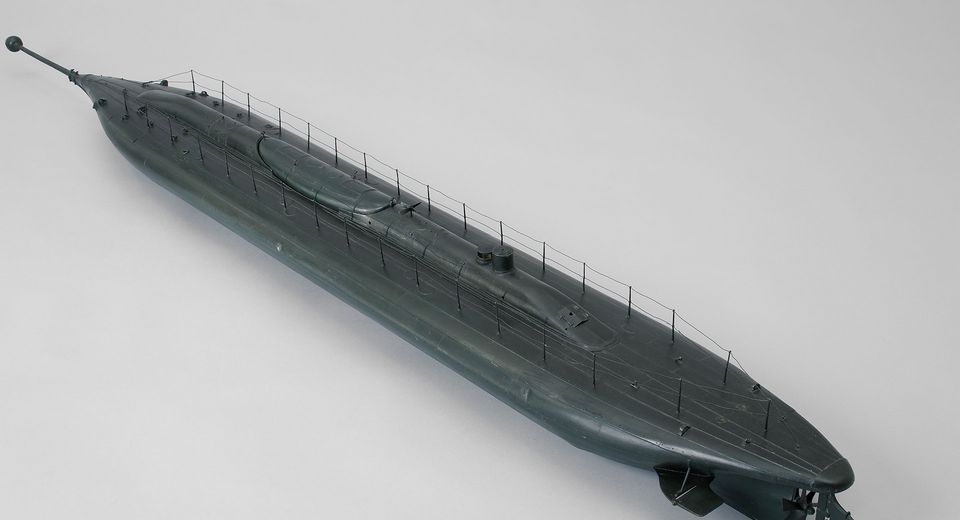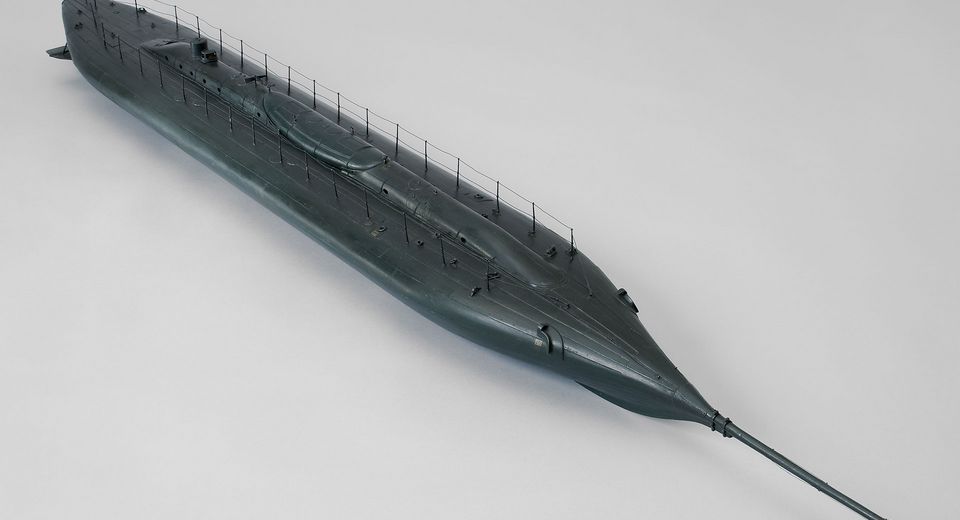The model of Le Plongeur
Rochefort - Hôtel de Cheusses/Arsenal
Built in Rochefort’s naval shipyard between 1860 and 1863, Le Plongeur marked the beginnings of France’s military submarine force. Although its first voyages had mixed results, it was regarded as a true technological feat. As well as positioning France as a maritime power, presentation of the model of Le Plongeur at the Universal Exhibition made the submarine famous.
The submarine
 Enlarge image : le Plongeur
Enlarge image : le Plongeur
Le Plongeur: an example of innovation…
The French Navy’s first submarine, Le Plongeur was built at Rochefort’s shipyard between 1860 and 1863. It was designed by Ship’s Captain Siméon Bourgois and the engineer Charles Brun in the greatest secrecy, “in a special hangar that can be closed to prying eyes”. 44.50 metres long and 6 metres wide, with a riveted steel hull, it far surpassed any of the submersibles that came before it.
…but its results were mixed
Le Plongeur underwent its first trials in 1863, in dry dock no.3, in the Charente, and then in the open sea between La Rochelle and the port of La Pallice. Its first voyages were not entirely satisfactory, however. Too easily spottable due to the wake it left, the submarine also had problems with regard to its autonomy and stabilisation. Four years after it was launched, although it had almost never been put to sea, Le Plongeur was decommissioned and turned into a tank vessel.
A model that added to Le Plongeur’s fame
Despite its mixed results, Le Plongeur was the embodiment of remarkable advances in the eyes of the Navy, which drew inspiration from it for its next projects. In order to show that France was an innovative country as far as maritime projects were concerned, the Minister of the Navy and the Colonies commissioned a scale model of Le Plongeur for the 1867 Universal Exhibition in Paris. Not only was the model seen by the era’s most powerful nations, it also aroused the interest of Jules Verne, who used it as inspiration for the Nautilus in his novel Twenty Thousand Leagues under the Sea. Now on exhibition as part of the National Maritime Museum’s collections in Rochefort, the model is a reminder of the Rochefort shipyard’s role in the beginnings of France’s military submarine force.
Collection highlight
The essential works to see during your visit to the Musée national de la Marine in Brest, Port-Louis, Rochefort, Toulon, and soon in Paris.


